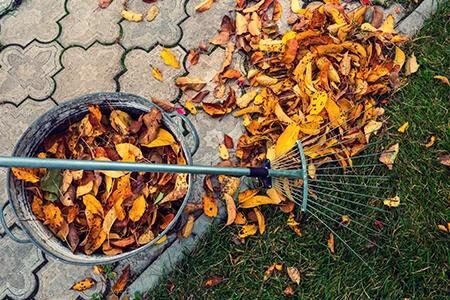
Clean your garden before cold months
Before the weather gets colder, you need to prepare your garden, so that you do not have any nasty surprises when the temperature gets low. As the days gradually start to get cooler, gardeners around the country are starting to adjust their daily routine to ensure their plants aren’t affected… Read MoreBefore the weather gets colder, you need to prepare your garden, so that you do not have any nasty surprises when the temperature gets low. As the days gradually start to get cooler, gardeners around the country are starting to adjust their daily routine to ensure their plants aren’t affected by the change in weather. Everything because temperamental plants and veggie patches change their tune at the slightest temperature drop.
So, if you’re new to gardening or you just aren’t sure how to care for your plants in cold months, we might have a few tips for you!
First thing you wanna do is to move tropical plants or other warmth-lovers into more protected spots such as a verandah or deck. You should also be cutting back on watering slightly and when you do water, try to do so with warm, but not hot, water to remove the chill and prevent shocking the roots.
After a long, hot summer, your lawn may be looking a little dry and patchy, so remember to fertilize it with some much-needed nutrients. This can greatly boost the growth of your lawn by the time next summer comes around. You can also improve drainage by using a fork to dig deep holes scattered around your garden.
As the cold weather slows down plant growth, it surely makes the perfect time to get on top of weeds. Ged rid of weeds before they mature and set seeds by removing roots and all with your hands in smaller sections. For larger areas, we recommend a garden hoe or tiller.
Do not forget to spray the plants and surrounding soil with lime sulfur to clean up pests and disease, while also applying a seaweed tea (or any low environmental impact liquid product) to the soil and new seedlings for drought-protection, as well as resistance to frost and pest attacks.
Next thing on the list is pruning! Hydrangeas, wisterias, grapes and of course roses are plants that must be pruned, as they leave an open framework to start afresh.Trees that lose their leaves during winter make it easier to find structure and remove problems such as crossing wood and double leaders.
After that you can put the leaves on your garden beds to provide free mulch to nourish your plants, prevent early spring weeds, and help pollinators over colder months. What is important! Don’t put diseased plant parts in the compost, put them directly into the trash. Plant parts that are diseased or have heavy insect infestations could spread diseases to next year’s garden.
Last, but also important thing to remember is covering your garden furniture and storing your gardening tools. All your gardening equipment can be kept in your shed, but get a waterproof cover and be sure to cover your furniture head-to-toe. You can easily secure it down with some bricks or stones.
So, there are our top tips on how to prepare your garden for the colder weather. Though you may love nothing more than kicking around crunchy fallen leaves, get started as early as possible to save it from the potentially damaging weather!
